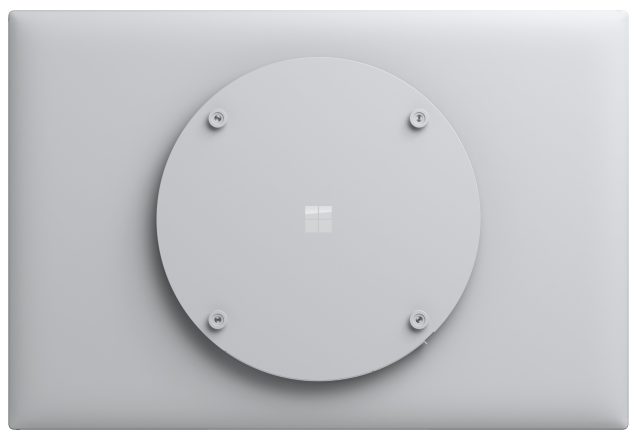First announced last year, Microsoft's second-generation Surface Hub now has a price and release schedule—and a couple of new siblings, too.
Surface Hub is Microsoft's hardware dedicated to collaboration within meetings. It combines several roles, most notably digital whiteboarding and video conferencing, with Teams, Skype, and OneNote built into a single combined, integrated package. The 50-inch 2S is only vaguely specified: it has a custom-built 3:2 aspect ratio 4K (3840×2560 with 10 bits per pixel) screen with embedded touch sensors that work with both pen and finger. Inside is an 8th-generation Core i5 (Microsoft offered no more specifics than that) with 8GB RAM and 128GB SSD storage; while that may seem miserly, the Surface Hub 2 software is designed so that it doesn't store data locally, so 128GB should be abundant. To support video conferencing, it has an array of eight microphones, front-firing speakers, and a detachable 4K webcam. It will be available in the US from June, with other markets following, for a price of $8,999. One pen and one camera come in the box.
As we've come to expect from Microsoft, the screen looks great. It has a matte finish (reflections are too hard to avoid otherwise), so it doesn't quite have the punch a gloss finish would get it, but it's far better than many of the 1080p screens I've seen in offices around the world. Using techniques refined from building its portable Surface devices, the Hub 2's display integrates the touch-sensing layers into the glass of the screen, a design that makes the screen itself much thinner and reduces the parallax error when using a pen (it was 3mm in the first generation, down to 1.7mm in this).

The software stack it runs is an updated version of the original Surface Hub platform. Though based on Windows 10, this isn't Windows 10; it can't run arbitrary Win32 applications, only Universal Windows Platform applications, and this is at least in part due to its specialized nature: when you end a meeting, anything you drew on the whiteboard or in OneNote, chat transcripts, and so on, is saved to some networked location, and then your entire session is discarded, leaving no trace of the things you've done, so the machine is pristine for the next meeting.
But here's where things get complicated. The original announcement last May wasn't for the "Surface Hub 2S." It was for the "Surface Hub 2," and Microsoft demonstrated a number of neat capabilities: rotating the screen between its portrait and landscape modes was seamlessly smooth, and up to five of the systems could be placed in portrait mode to make a giant display. Indeed, Surface Hub 2S has a rotation mechanism built in. Try to rotate the screen, however, and it won't budge.
That's because of something announced last September: the Surface Hub 2 was split into two models, with the 2S available this year, and the 2X next year. The underlying cause for this split is believed to be the software. Surface Hub 2 is expected to ship with a modernized version of Windows 10 and a new version of its custom user interface, and that's not going to be ready this year. Features like the smooth screen updating during rotation and the multi-display capability depend on this new software, so since that's not finished, Surface Hub 2S doesn't have them.
However, Microsoft doesn't want to leave out Surface Hub 2S buyers. When Surface Hub 2X is released next year, it will be possible to upgrade 2S units to the 2X spec and feature set. This won't be a simple software upgrade; it will require a hardware upgrade, too. The Surface Hub 2 puts its processor, memory, and storage into a removable module that slots in the back of the system. 2S owners will be able to install a 2X compute module when it becomes available, and this will provide them with the updated system software and the new rotation/multi-screen facilities.
The current 2S compute module is designed so that it locks the rotation mechanism in place; it has a small protrusion that prevents rotating the screen. As far as I can tell, it's still possible and supported to switch between portrait and landscape modes, but doing so requires removing the 2S compute module, rotating the screen, and then reinserting the 2S compute module to re-lock the screen in its new orientation.
Specs of the 2X compute module? Unknown. Availability? Also unknown. Price? Non-zero, but how high is anyone's guess. What will companies do with all their obsolete 2S compute modules once they've upgraded to the 2X? Again, a mystery.

Microsoft says, entirely plausibly, that the system was always going to have a modular compute unit even if the 2S/2X split hadn't been necessary. That's because of the general observation that computer tech is progressing faster than screen tech, and large-screeRead More – Source
[contf] [contfnew] 
Ars Technica
[contfnewc] [contfnewc]






